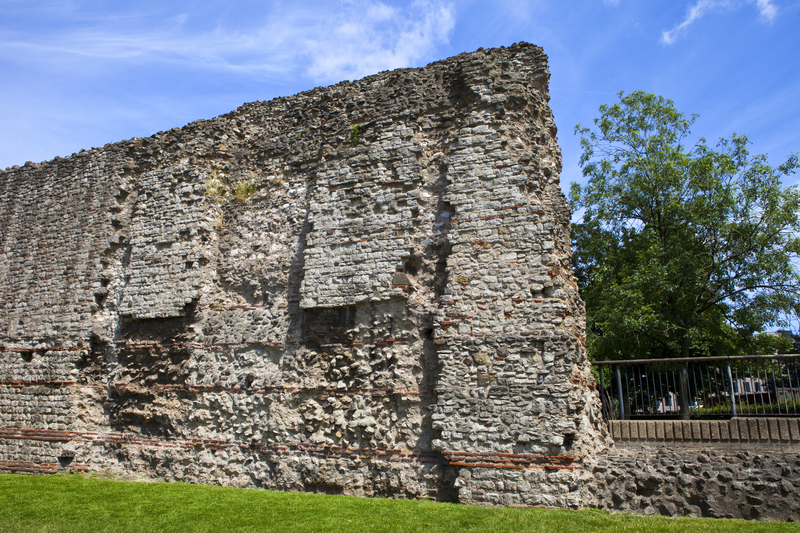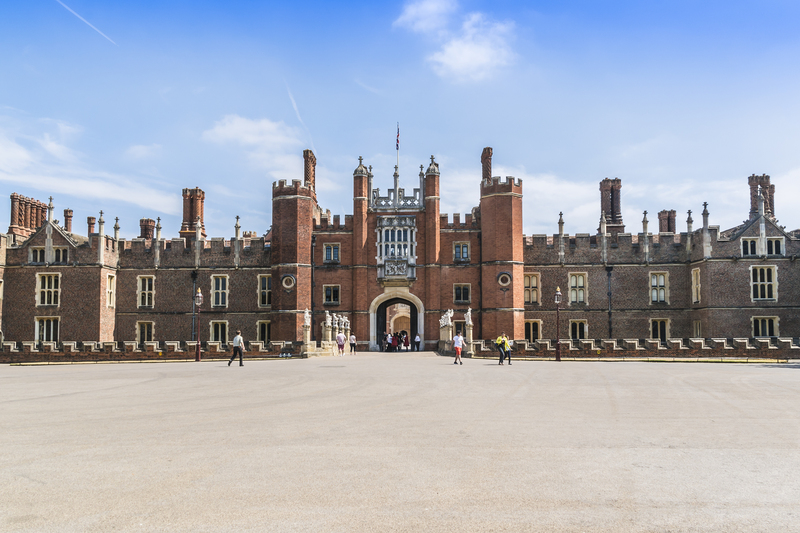Achieve Spotless Carpets and Gleaming Hard Floors
Posted on 18/09/2025
Achieve Spotless Carpets and Gleaming Hard Floors: The Ultimate Cleaning Guide
Maintaining spotless carpets and gleaming hard floors is essential for a healthy, attractive, and comfortable home. Whether you're dealing with everyday messes, pet stains, or dull tiles, knowing the right cleaning methods will make all the difference. In this comprehensive guide, you'll discover proven strategies, expert tips, and recommended products to achieve pristine carpets and brilliant hard floors.

Why Clean Carpets and Hard Floors Matter
Your floors are one of the first things visitors notice and are vital for indoor air quality, hygiene, and the lifespan of your surfaces. Clean flooring enhances your home's value, makes rooms inviting, and reduces allergens. The benefits of sparkling floors and spotless carpets include:
- Improved indoor air quality: Carpets trap dust, pollen, and bacteria. Clean carpets release fewer allergens.
- Longer-lasting investments: Regular care prevents premature wear, stains, and damage.
- Enhanced appearance: Gleaming floors and bright carpets set the tone for your entire space.
- Healthier living: Removing grime, mold, and buildup eliminates triggers for asthma and allergies.
Understanding Different Flooring Types
To achieve flawless carpets and radiant floors, it's important to recognize the unique requirements of various materials. Cleaning techniques, tools, and products vary, so adapting your routine based on your specific surfaces will produce the best results.
1. Carpets and Rugs
- Synthetic fibers (nylon, polyester, olefin): Highly stain-resistant and durable.
- Wool: Luxurious and natural, but sensitive to harsh chemicals and moisture.
- Blends: Offer a balance of durability and softness, may require special care.
2. Hard Floors
- Hardwood: Classic and elegant, but can scratch or warp with excess water.
- Laminate: Cost-effective and tough, but never wet mop--excess water causes swelling.
- Tile and stone: Water-resistant, easy to clean, but grout can stain or mildew.
- Vinyl and linoleum: Resilient and easy to maintain, but prone to scratching.
- Bamboo: Durable and eco-friendly, but sensitive to moisture and harsh chemicals.
Step-by-Step: Achieving Spotless Carpets
1. Choose the Right Vacuum
Regular vacuuming is the foundation for pristine, stain-free carpets. Invest in a high-quality unit with strong suction and HEPA filtration, especially if allergies are a concern.
- Use upright vacuums for deep-pile and wall-to-wall carpets.
- Opt for canister vacuums for delicate rugs and hard-to-reach areas.
- Empty the dustbin or replace bags frequently for optimal performance.
2. Treat Stains Immediately
Spotless carpets require prompt attention to spills and spots. Act quickly to keep carpets looking their best:
- Blot--not rub--liquid spills with a clean, absorbent towel.
- Use the correct cleaning agent for the type of stain--enzyme cleaners for pet messes, vinegar for food spills, or hydrogen peroxide for organic stains.
- Test any cleaning solution on an inconspicuous area first to avoid discoloration.
- Allow the area to fully air dry to prevent mold and odor.
3. Deep Clean Regularly
Even with diligent vacuuming, dust and grime accumulate. To truly achieve spotless carpets, plan a deep clean every 6-12 months:
- Rent or invest in a carpet cleaning machine (steam or hot water extraction).
- Consider professional carpet cleaning for delicate or large areas.
- Allow carpets to dry thoroughly after deep cleaning to avoid mildew or lingering odors.
4. Preventative Measures
Reduce tracking dirt and debris onto your carpets by:
- Using entryway mats and removing shoes indoors.
- Keeping pets' paws wiped clean.
- Rearranging furniture occasionally to prevent permanent denting or fading.
Secrets for Gleaming Hard Floors
1. Sweep or Vacuum Daily
Regular sweeping or vacuuming removes dust, grit, and pet hair that can scratch and dull hard floor surfaces. Use a microfiber dust mop or vacuum with a hard floor setting for efficiency.
2. Mop Properly for Brilliant Shine
Choosing the right mopping technique is essential for gleaming, streak-free hard floors:
- For hardwood, damp mop--never soak. Water should not puddle; use pH-neutral cleaners designed for wood.
- Laminate floors need minimal water--mop with a barely damp pad.
- Tile and stone can be mopped with warm water and mild detergent. Avoid bleach or acidic cleaners on natural stone.
- Vinyl, linoleum, and bamboo floors benefit from specialty cleaners recommended by flooring manufacturers.
3. Address Spills and Spots Quickly
To keep hard floors spotless:
- Wipe up spills immediately to avoid stains, slipping, or water damage.
- For tough marks, use a non-abrasive sponge or cloth with a small amount of appropriate floor cleaner.
- Never use steel wool or harsh brushes!
4. Buff for Extra Gleam
Once clean, buff floors with a dry microfiber cloth or mop for an eye-catching finish. For wood floors, occasional polishing with high-quality products adds depth and shine.
5. Protect Your Investment
- Use felt pads under furniture to avoid scratches and gouges.
- Place rugs in high-traffic areas to minimize wear.
- Clean up pet accidents instantly to prevent permanent stains or odors.
Recommended Cleaning Solutions and Tools
To master the art of carpet and floor cleaning, equip yourself with the right tools and cleaning solutions:
- Microfiber mops and cloths: Attract and hold dirt, ideal for all surfaces.
- HEPA vacuum cleaners: Capture fine dust, pollen, and allergens.
- Enzyme cleaners: Break down organic stains--perfect for pet-owners.
- pH-balanced floor cleaners: Safe for hardwood and laminate.
- Steam mops (for tile/stone/vinyl): Offer deep cleaning without chemicals.
- Protective floor finishes or polish for an extra touch of brilliance.
Green and Eco-Friendly Floor Care
Want to achieve immaculate carpets and dazzling hard floors the eco-friendly way? Green cleaning protects your health, your family, and the planet. Here are some natural solutions:
- Baking soda: Deodorizes carpets and acts as a gentle abrasive on floors.
- White vinegar: Cuts through grime and acts as a safe, non-toxic floor cleaner (avoid on hardwood and stone).
- Lemon juice: Naturally disinfects and adds a fresh scent to tile floors.
- Essential oils (tea tree, lavender): Add to mopping water for antibacterial action and a pleasant aroma.
Always spot-test homemade solutions before full use, and never mix vinegar with bleach.
Troubleshooting Common Carpet and Floor Problems
Stubborn Stains on Carpets
- Red wine or juice: Blot immediately, then dab with a mixture of dish soap and hydrogen peroxide.
- Pet accidents: Use enzyme-based carpet cleaners to fully break down proteins and eliminate odor.
- Mud: Allow to dry fully, vacuum up soil, then clean any remaining stain with a carpet solution.
Scratches and Dullness on Hard Floors
- Buff minor scratches on wood with a walnut or specialized repair kit.
- For laminate or vinyl, use a recommended scratch repair pen.
- Restore shine with a periodic application of floor polish, but avoid wax on factory-finished floors.
Lingering Odors
- Sprinkle baking soda on carpets, let sit, and vacuum for freshness.
- Ventilate rooms after deep cleaning to dissipate moisture and odors.
How Often Should You Clean?
- Vacuum carpets: At least twice a week, more if you have pets or allergies.
- Sweep or vacuum hard floors: Daily or every other day for high-traffic zones.
- Deep clean carpets: Every 6-12 months, and more often for homes with children or pets.
- Mop hard floors: Weekly, or promptly after spills.
Professional Cleaning vs. DIY: What's Best?
While DIY cleaning routines are effective for day-to-day care, sometimes hiring specialists can deliver deeper, longer-lasting results--especially for tough stains, large areas, or delicate materials.
- Professional carpet cleaners use industrial-strength equipment and cleaners inaccessible to homeowners.
- Expert floor technicians can safely restore hardwood, tile, or stone floors with specialized tools and know-how.
Reserve professional cleaning annually, after major spills, or if flooring warranties require it.

Maintaining Spotless Carpets and Gleaming Floors Long-Term
Consistency is the key to spotless carpets and gleaming hard floors. With the right techniques, tools, and habits, you won't just enjoy a more beautiful home--you'll add years of life to your flooring.
- Schedule regular cleaning--mark your calendar for deep cleans and routine maintenance.
- Encourage a "no shoes" policy and use mats at doorways to trap dirt.
- Promptly address spills, stains, and scuffs for lasting cleanliness.
- Invest in protective treatments, such as carpet stain guard or sealant for stone floors.
Final Words: Enjoy Your Pristine Carpets and Sparkling Floors
Taking the time to care for your carpets and floors pays off in every way: from a healthier environment to stunning aesthetics and even increased property value. By following these expert-approved strategies, you'll achieve spotless carpets and gleaming hard floors that make every day more pleasant.
Transform your home today--embrace these best practices, and watch your carpets and hard floors shine like new!




